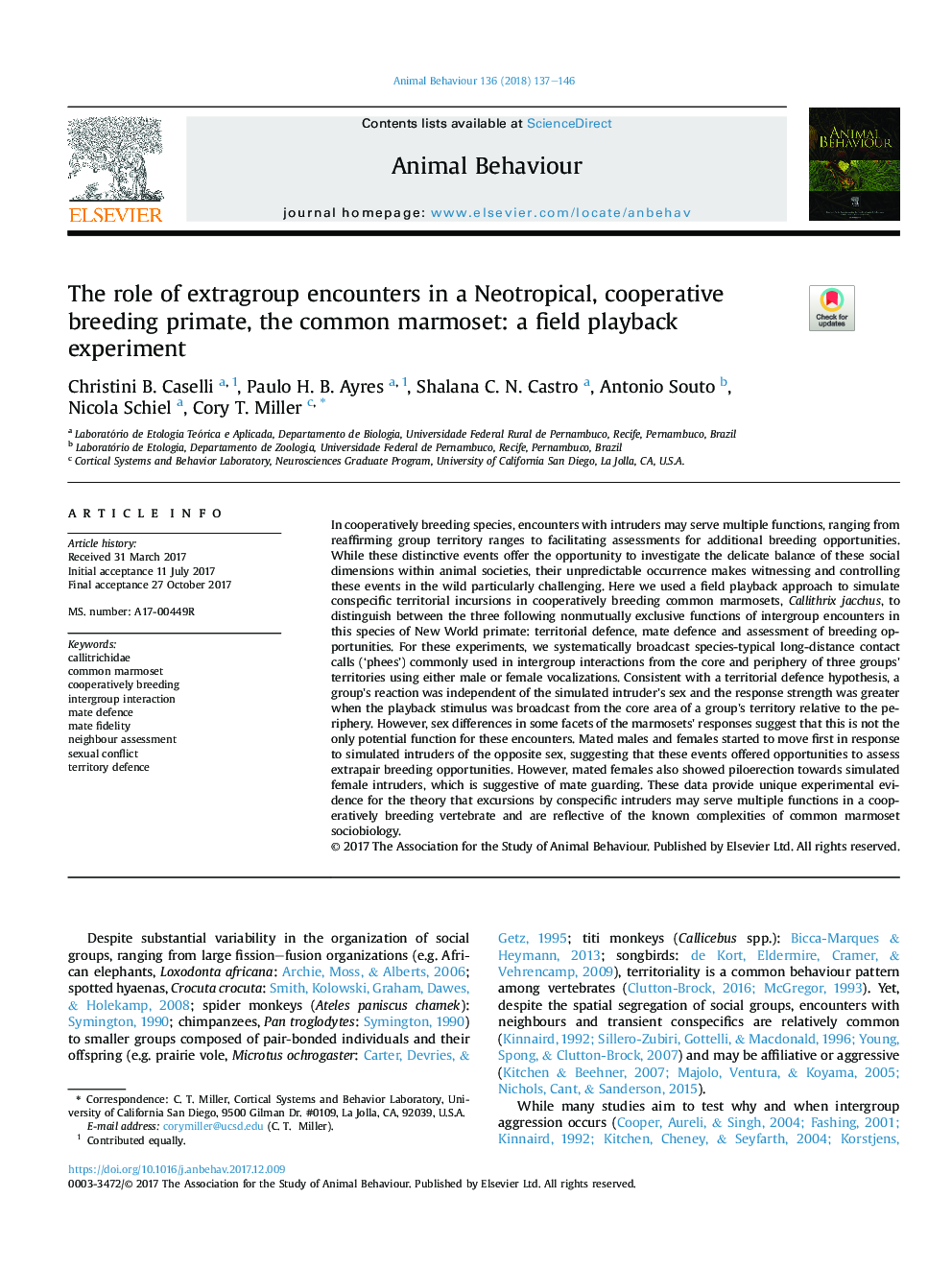| Article ID | Journal | Published Year | Pages | File Type |
|---|---|---|---|---|
| 8488685 | Animal Behaviour | 2018 | 10 Pages |
Abstract
In cooperatively breeding species, encounters with intruders may serve multiple functions, ranging from reaffirming group territory ranges to facilitating assessments for additional breeding opportunities. While these distinctive events offer the opportunity to investigate the delicate balance of these social dimensions within animal societies, their unpredictable occurrence makes witnessing and controlling these events in the wild particularly challenging. Here we used a field playback approach to simulate conspecific territorial incursions in cooperatively breeding common marmosets, Callithrix jacchus, to distinguish between the three following nonmutually exclusive functions of intergroup encounters in this species of New World primate: territorial defence, mate defence and assessment of breeding opportunities. For these experiments, we systematically broadcast species-typical long-distance contact calls ('phees') commonly used in intergroup interactions from the core and periphery of three groups' territories using either male or female vocalizations. Consistent with a territorial defence hypothesis, a group's reaction was independent of the simulated intruder's sex and the response strength was greater when the playback stimulus was broadcast from the core area of a group's territory relative to the periphery. However, sex differences in some facets of the marmosets' responses suggest that this is not the only potential function for these encounters. Mated males and females started to move first in response to simulated intruders of the opposite sex, suggesting that these events offered opportunities to assess extrapair breeding opportunities. However, mated females also showed piloerection towards simulated female intruders, which is suggestive of mate guarding. These data provide unique experimental evidence for the theory that excursions by conspecific intruders may serve multiple functions in a cooperatively breeding vertebrate and are reflective of the known complexities of common marmoset sociobiology.
Keywords
Related Topics
Life Sciences
Agricultural and Biological Sciences
Animal Science and Zoology
Authors
Christini B. Caselli, Paulo H.B. Ayres, Shalana C.N. Castro, Antonio Souto, Nicola Schiel, Cory T. Miller,
